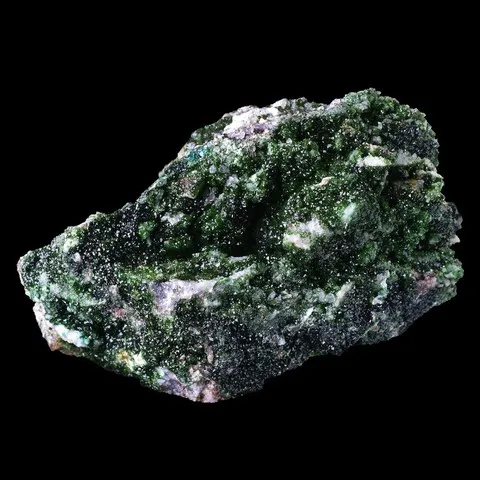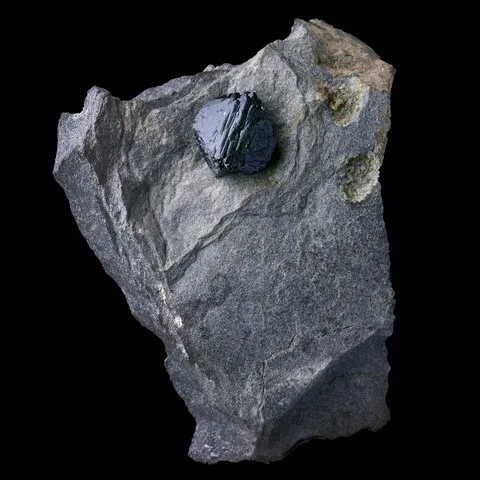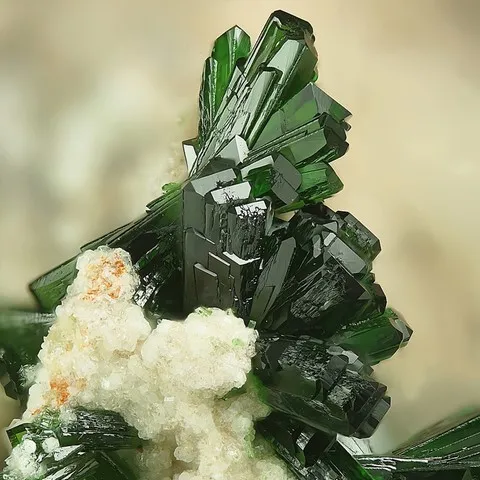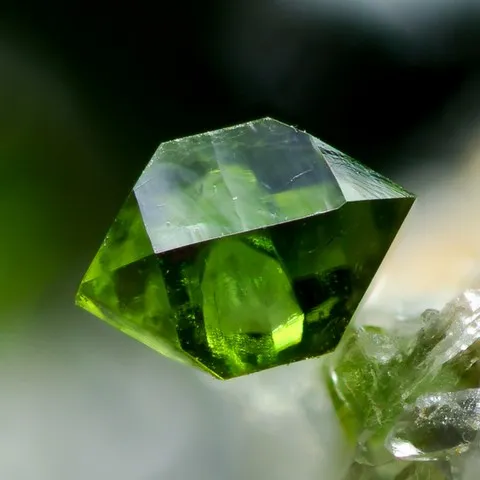LIBETHENITE
Class : Phosphates, arsenates, vanadates
Subclass : Anhydrous phosphates
Crystal system : Orthorhombic
Chemistry : Cu2PO4(OH)
Rarity : Rare
Libethenite (or chinoite) is a relatively rare secondary phosphate in the oxidation zone of copper deposits, where it mixes with malachite, pseudomalachite and brochantite. Its transformation into chrysocolla was observed. Phosphorus is partially replaced by arsenic, giving rise to a very limited solid solution with olivenite, to which it is very similar. It owes its name to its locality of discovery : Libethen in Slovakia. Libethenite occurs in short prismatic crystals or is slightly elongated in [100], sometimes in regular pseudo-octahedra when the vertical prism and horizontal prism forms have comparable development. It has a vitreous to oily luster and a typical olive-green to blackish-green color. It is a mineral only reserved for the collection, but little known collectors.
Libethenite in the World
Libethenite in France

In the French underground, libethenite is only present in millimeter-sized crystals. It is reported in the silver mine of Zimmerbach (Haut-Rhin), Montebras (Creuse), Falgayrolles and Bastit (Aveyron) and finally Valcroze (Gard). The photo on the left shows a sample photographed by Jean Claude Dol in prismatic crystals.
Twinning
No twin known for the species.
Fakes and scams
No fake inventories for this mineral species.
Hardness : 4
Density : 3.7
Fracture : Irregular to conchoidal
Trace : Green
TP : Translucent to transparent
RI : 1.701 to 1.790
Birefringence : 0,080
Optical character : Biaxial -
Pleochroism : Weak
Fluorescence : None
Solubility : Acids and ammonia
Magnetism : None
Radioactivity : None






